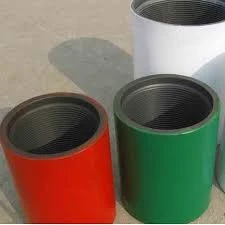- Afrikaans
- Albanian
- Amharic
- Arabic
- Armenian
- Azerbaijani
- Basque
- Belarusian
- Bengali
- Bosnian
- Bulgarian
- Catalan
- Cebuano
- Corsican
- Croatian
- Czech
- Danish
- Dutch
- English
- Esperanto
- Estonian
- Finnish
- French
- Frisian
- Galician
- Georgian
- German
- Greek
- Gujarati
- Haitian Creole
- hausa
- hawaiian
- Hebrew
- Hindi
- Miao
- Hungarian
- Icelandic
- igbo
- Indonesian
- irish
- Italian
- Japanese
- Javanese
- Kannada
- kazakh
- Khmer
- Rwandese
- Korean
- Kurdish
- Kyrgyz
- Lao
- Latin
- Latvian
- Lithuanian
- Luxembourgish
- Macedonian
- Malgashi
- Malay
- Malayalam
- Maltese
- Maori
- Marathi
- Mongolian
- Myanmar
- Nepali
- Norwegian
- Norwegian
- Occitan
- Pashto
- Persian
- Polish
- Portuguese
- Punjabi
- Romanian
- Russian
- Samoan
- Scottish Gaelic
- Serbian
- Sesotho
- Shona
- Sindhi
- Sinhala
- Slovak
- Slovenian
- Somali
- Spanish
- Sundanese
- Swahili
- Swedish
- Tagalog
- Tajik
- Tamil
- Tatar
- Telugu
- Thai
- Turkish
- Turkmen
- Ukrainian
- Urdu
- Uighur
- Uzbek
- Vietnamese
- Welsh
- Bantu
- Yiddish
- Yoruba
- Zulu
what are the differences between casing and tubing?
Understanding the Differences Between Casing and Tubing in Oil and Gas Operations
In the oil and gas industry, the terms casing and tubing are fundamental components of well construction and operation, yet they serve distinctly different purposes. Understanding these differences is crucial for professionals in the field and can significantly impact the efficiency and safety of drilling operations.
Understanding the Differences Between Casing and Tubing in Oil and Gas Operations
There are several types of casing used in drilling operations, each designed for specific purposes. Surface casing is the first string of casing that is installed and is usually set at a shallow depth to protect freshwater aquifers. Intermediate casing comes next and provides additional protection and support, especially in areas with unstable geological formations. Finally, production casing houses the tubing and is set at greater depths, enabling the extraction of hydrocarbons from the reservoir.
what are the differences between casing and tubing?

On the other hand, tubing refers to the smaller diameter pipe that is installed inside the casing after the completion of the well. Its primary role is to transport oil and gas from the production zone to the surface. Tubing is designed to handle the pressure and flow rates associated with the extraction process, and it is often equipped with various accessories, such as packers and safety valves, to optimize production and ensure safety.
One of the key differences between casing and tubing lies in their construction and specifications. Casing is generally larger in diameter and thicker-walled compared to tubing, as it must withstand the external pressures of the surrounding geological formations. Tubing, however, is lighter and thinner, designed to facilitate the flow of hydrocarbons efficiently.
Furthermore, the lifecycle of casing and tubing differs. Casing is a permanent fixture in the well, meant to last for the duration of the well's life, while tubing can be replaced or removed as necessary for maintenance, repair, or to accommodate changes in production strategies. The ability to replace tubing without compromising the casing is a critical aspect of well management, allowing operators to adapt to varying production conditions and technologies over time.
In summary, casing and tubing play essential and distinct roles in the oil and gas industry. Casing provides structural support and protection for the well, while tubing enables the transportation of hydrocarbons to the surface. Understanding these differences enhances the comprehension of well construction and operation, optimizing extraction processes and ensuring safety in drilling activities. As the industry evolves, innovations in materials and technology will likely continue to enhance the roles of both casing and tubing, underscoring their importance in the future of energy production.
-
Tubing Pup Joints: Essential Components for Oil and Gas OperationsNewsJul.10,2025
-
Pup Joints: Essential Components for Reliable Drilling OperationsNewsJul.10,2025
-
Pipe Couplings: Connecting Your World EfficientlyNewsJul.10,2025
-
Mastering Oilfield Operations with Quality Tubing and CasingNewsJul.10,2025
-
High-Quality Casing Couplings for Every NeedNewsJul.10,2025
-
Boost Your Drilling Efficiency with Premium Crossover Tools & Seating NipplesNewsJul.10,2025







